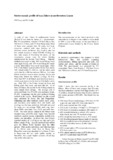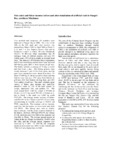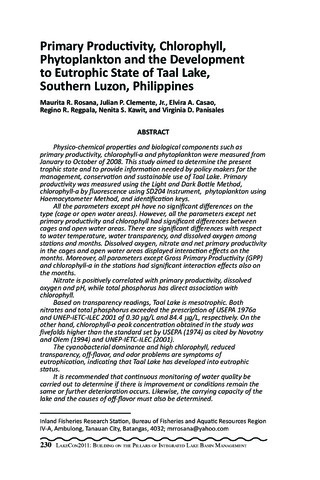Socioeconomic profile of tuna fishers in northwestern Luzon
- Global styles
- MLA
- Vancouver
- Elsevier - Harvard
- APA
- Help
Share
นามธรรม
A study of tuna fishers in northwestern Luzon (Region I) was done by means of a questionnaire. The 511 respondents included 178 from Ilocos Sur, 200 from La Union, and 133 from Pangasinan. Most of them were younger than 50 years, had basic education, married with large families of 3-9 children, owned the houses they lived in, and had low annual incomes of about P35,000. Fishing was their sole means of livelihood for almost all the respondents, except some for whom farming supplemented the income from fishing. Majority worked every night or day, 36% went fishing every other night or day, and 13% went fishing five times a week. Most fishers went out to sea at night. Fully 52% of the fishers worked within 50 km from shore; 38% fished within 51–100 km, and the others went out farther than 100 km and even 200 km. La Union fishers worked closest to shore (average 38 km) and Pangasinan fishers the farthest (average 92 km). More than 90% of all fishers used motorized bancas, which made it possible for them to fish farther out to sea. Only 36% of the fishers owned the boats and fishing gears they used, and most did not. In all three provinces, the capital for the fishing enterprise came mainly from savings. The average cost of motorized boats was P31,200; non-motorized boats, P1,200. Longlining was the most preferred fishing method in the region. Hand lining was the second most preferred in Ilocos Sur and Pangasinan. Gillnetting and other methods (rabuk, kawil, pana, and bira-bira) were ranked third and fourth, and trawling was the least preferred. Drift gill nets used for tunas cost on average P680; tuna long lines, about P600; tuna hand lines, P345; and troll lines, P750. The main species caught by the fishers were skipjack tuna, yellowfin tuna, frigate tuna, Spanish mackerel, rainbow runner, dolphinfish, sailfish, blue marlin, and threadfins. In Ilocos Sur, most fishers reported catches of 11-20 kg in one trip, and a few fishers caught 50 kg. Spanish mackerel and sailfish gave the fishers better incomes than the other species. Fish catches and prices and fisher incomes in La Union were lower than in Ilocos Sur. Threadfins were more abundant in La Union. Fishers in Pangasinan did not catch sailfin, marlin, or threadfins, but caught higher volumes (20–60 kg/trip) of the other species.
การอ้างอิง
Panay, V. R., & Ledda, N. L. (2007). Socioeconomic profile of tuna fishers in northwestern Luzon. In T. U. Bagarinao (Ed.), Research Output of the Fisheries Sector Program (Vol. 2. Reports on Fisheries and Aquaculture, pp. 28-34). Quezon City, Philippines: Bureau of Agricultural Research, Department of Agriculture.
Type
Book chapterISBN
9718511776
Related items
Showing items related by title, author, creator and subject.
-
Fish catch and fisher incomes before and after installation of artificial reefs in Panguil Bay, northern Mindanao
Moncay, H. P.; Cablo, L. P. (Bureau of Agricultural Research, Department of Agriculture, 2007)Two artificial reef complexes (10 modules) were deployed in Panguil Bay in 1990. The effect of the ARs on the fish catch and fisher incomes was studied from March 1993 to April 1994 in Purok 3, 4, 6, and 7 in San Antonio, ... -
Financing from LandBank
LandBank, Iloilo City (Aquaculture Department, Southeast Asian Fisheries Development Center, 2000) -
Series: Summary of Proceedings No. 1/2013;
Primary productivity, chlorophyll, phytoplankton and the development to eutrophic state of Taal Lake, southern Luzon, Philippines
Rosana, Maurita R.; Clemente Jr., Julian P.; Casao, Elvira A.; Regpala, Regino R.; Kawit, Nenita S.; Panisales, Virginia D. (PCAARRD-DOST, 2013)Physico-chemical properties and biological components such as primary productivity, chlorophyll-a and phytoplankton were measured from January to October of 2008. This study aimed to determine the present trophic state and ...





